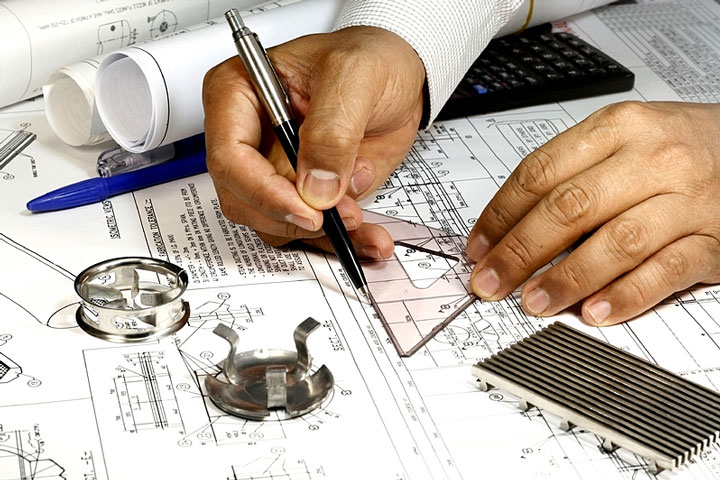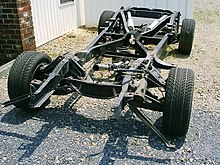Working as a Mechanical Engineer

Working as a mechanical engineer can be a rewarding and fulfilling experience. Mechanical engineers work to design, build and analyze motor vehicles, aircraft, heating and cooling systems, watercraft, manufacturing plants, industrial equipment and machinery, robotics, medical devices, alternative energy and more.
Mechanical engineering has a long history, and mechanical engineers join a host of renowned inventors such as Archimedes (Golden Crown, Archimedes Screw, Claw of Archimedes), Henry Ford (Ford Motor Company), Rudolf Diesel (diesel engine) and Bill Nye the Science Guy (hydraulic pressure resonance suppressor used in the Boeing 747).
Financial
Mechanical engineering is a challenging, lucrative profession. The latest statistics from the U.S. Census (2013) report the mean annual salary for a mechanical engineer at $84,770. The Cockrell School of Engineering Salaries and Statistics report states the 2013 average starting for a mechanical engineer from this department was $69,044. By comparison, the U.S. Census reports a mean salary for all occupations in 2013 as $45,790.Fields
Mechanical engineering is an incredibly broad field, and provides the engineer a number of different areas in which to work. Following is summary of the areas included in mechanical engineering.Basic Engineering
Mechanical engineers deal with the mechanics of motion and the transfer of energy.Applied Mechanics
Applied Mechanics looks at shock and vibration, dynamics and motion, and fracture and failure in components.Fluids Engineering
There are mechanics involved in anything that flows — air, water, sand, oil, etc. Fluids engineers design and build systems that control or utilize flow, such as pumps, turbines, compressors, valves, pipelines and fluid systems in vehicles.Heat Transfer
Heat moves in systems all around us, from computers, to automobiles, to ventilation systems. The field of heat transfer deals with combustion, power generation and transmission systems, process equipment, electronic devices, thermal controls in manufacturing, environmental controls, biotechnology, aerospace applications, transportation equipment and even cryogenics.Bioengineering
Nearly every part of the human body may be described in mechanical terms. Bioengineering deals with artificial organs, biomechanics, biomaterials, bio-instrumentation, biotransport processes, human factors, medical devices, biomedical modeling and biological systems.Tribology
Tribology deals with interacting surfaces in motion. It looks at friction, lubrication and wear. Any products which involves two surfaces rubbing against one another is the concern of a tribologist.Energy Conversion
Our world is incredibly dependent on the conversion of energy into useful forms. A mechanical engineer is extremely important in this conversion.Internal Combustion Engines
IC engines are not only used in automobiles, but are also used in aircrafts, marine vessels and even some stationary applications such as electric generators.Fuels & Combustion Technologies
Some mechanical engineers specialize in fuels and combustion systems. In addition to working with combustion systems, they also deal with fuel processing, alternative fuels, fuel handling, transportation and storage.
Triga Reactor Core
Power Engineering
Mechanical engineers work in power engineering in the design and production of electricity-producing systems.Energy Resources
In addition to working in the conversion of energy, mechanical engineers may also work in finding and developing new forms of energy.Advanced Energy Systems
Mechanical engineers develop new energy systems such as power cycle devices, fuel cells, gas turbines and many others.Solar Engineering
Mechanical engineers develop solar energy collectors and new and innovative ways to utilize solar energy.Nuclear Engineering
Mechanical engineers may design and develop nuclear reactors and components, such as heat exchangers, radioactive waste systems and new fuel technologies.Petroleum
The petroleum industry has been an important part of our lives for quite a while. Mechanical engineers work on oil and gas drilling and production, offshore and arctic operations, hydrocarbon processing, synfuels and coal technology, materials, equipment design and manufacture, fuel transport, new fuel technologies and pollution control.Ocean, Offshore & Arctic Engineering
Much of our energy sources already comes from offshore sources. Mechanical engineers design and build ocean structures, systems, hyperbaric chambers, life support equipment, marine vehicles, submersibles and ROV's, propulsion systems, remote sensing systems, moorings and buoys, ship structures and ocean mining equipment.Environment & Transportation
Getting from one place to another is something that affects every person every day of their lives. Mechanical engineers work to move us and our goods quickly and more efficiently. In addition, the effect that transportation, and other factors, have on the environment is something that concerns us all.Aerospace & Automotive
Mechanical engineers design propulsion engines and structural component systems, crew and passenger accommodations and life support systems. They also develop the equipment used to build automotive, aircraft, marine and space vehicles.Environmental Engineering
Environmental conditions normally deal with a mechanical process, the movement of heat, noise and pollutants through soil, water and air. Mechanical engineers can study the effects of these processes and work to reduce their impact on the environment.Noise Control & Acoustics
Sound is very much a mechanical phenomenon. It deals with the movement of vibrations through solids, liquids and gasses. A background in mechanical engineering can help to solve acoustical problems in noise control, industrial acoustics, and acoustic materials and structures.Rail Transportation
Mechanical engineers design, build and maintain rail systems which help move people and goods every day. New developments are being applied to develop a new generation of locomotives for freight, passenger and transit services.Solid Waste Processing
Solid waste processing is an important part of environmental protection. Mechanical engineers develop solid waste processing facilities, and work in areas related to recycling, resource recovery and waste-to-energy biomass conversion.Manufacturing
Mechanical engineers are critical in making a product become reality.Manufacturing Engineering
About half of mechanical engineers work for a company that makes something, whether it be consumer goods, transportation or industrial equipment. The work is as varied as the products that are produced.Materials Handling Engineering
Handling materials can be challenging when the material is costly, exotic or dangerous. Some mechanical engineers specialize in materials handling, transportation, handling equipment or hazard control technologies.Plant Engineering & Maintenance
Manufacturing plants often need to be updated. Mechanical engineers are crucial in this process.Process Industries
A process engineer changes materials from one form to another so that they can be used in new and interesting ways. A mechanical engineer will design and build the machines that heat, cool, liquefy, harden or soften substances.Textile Engineering
Textile companies seek out mechanical engineers in the design and production of the machines and plants that handle fabrics, weave or knit fabrics, manufacture apparel and handle the finished products.Materials & Structures
Mechanical engineers have to use a variety of different materials when making a product. The design and production of these materials is also an important process for a mechanical engineer.Materials Engineering
A materials mechanical engineer focuses on properties of materials and their effect on design, fabrication, quality, and performance. They work to create materials which can be cast, forged, stamped, rolled, machined or welded.Non-Destructive Evaluation
Nondestructive testing is necessary to determine the quality of a device without dismantling it. Mechanical engineers use x-rays, ultrasound, magnetic particle inspection, infrared and other techniques.Pressure Vessels & Piping
Pressure vessels and piping are critical in many industries, and mechanical engineers develop materials that resist fatigue and fracture, plan the fabrication of equipment, perform inspections and tests, and design components.Systems & Design
Most mechanical engineers work in the design and control of mechanical, electromechanical and fluid power systems. Design engineers take into account a truly wide number of factors in the course of their work, such as: product performance, cost, safety, manufacturability, serviceability, human factors, aesthetic appearance, durability, reliability, environmental impact and recyclability.Dynamic Systems & Control
Dynamic systems need to be controlled. Typical applications of DSC include novel transducer designs, biomechanics at the cellular and human scale, dynamics and control of power and vehicle systems, and innovations in signal and information theory. These engineers are needed in a vast number of areas — aerospace and transportation, biomedical equipment, production machinery, energy and fluid power systems, expert systems and environmental systems.Fluid Power Systems & Technology

An excavator, which employs hydraulic power systems, demolishes the old Experimental Sciences building to make way for new construction







 5-Axis machines are the most advanced
5-Axis machines are the most advanced 

